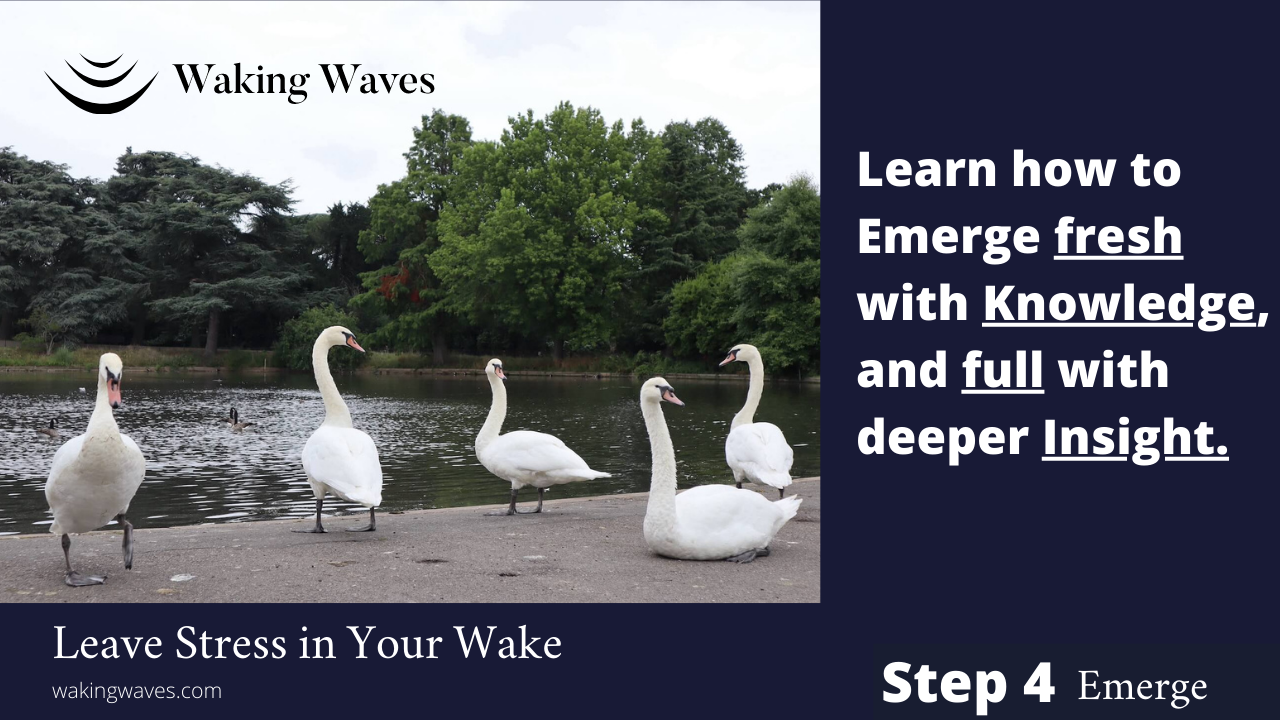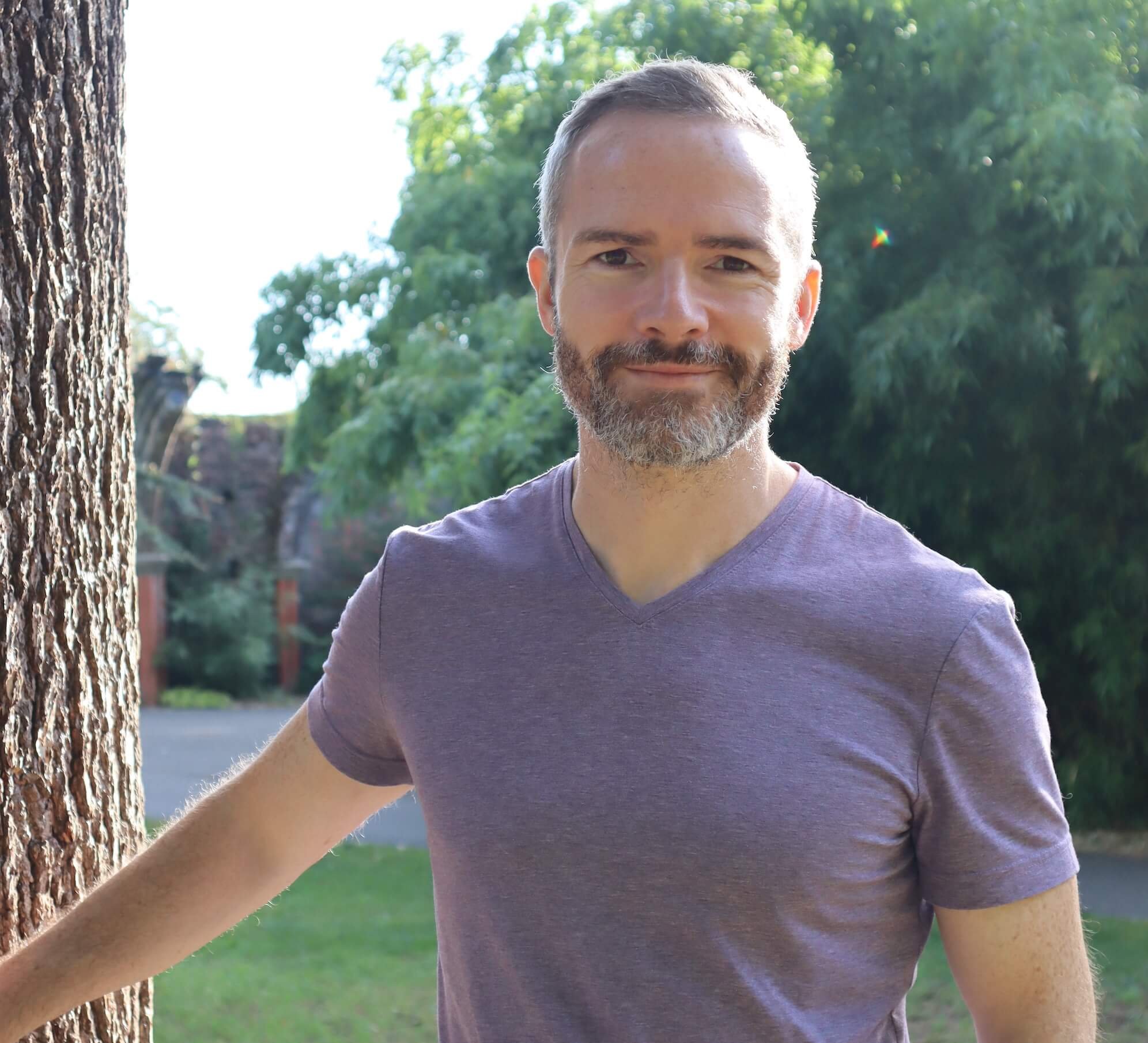Emerge with Understanding
Step 4: EMERGE
In the last session we dived a bit deeper into how our Stress Response prepares our bodies and brains for danger, to keep us safe. And that in our busy and more distracting modern lives, with an endless supply of potentially stressful moments, it doesn’t take a life threatening situation to put us on red alert. Being in this state for prolonged periods can have a lasting and damaging effect on our physical and mental health.
So far we suggested stopping to WATCH [Step 1] over our experience, then using an ANCHOR [Step 2] to calm our nervous system and create space. We then VIEW [Step 3] how we might meet those stressful experiences with more self-supporting ‘attitudes’ rather than rejecting, avoiding or ignoring. This then allows us to come to Step 4 today where we ‘EMERGE’ with greater calm, understanding and awareness.
But stressful moments often happen quickly and can be overwhelming, how do I emerge with anything?
My mind’s gone blank!
In the very moment of stress, it is extremely difficult to think clearly, let alone rationalise or analyse what is happening. And this is not limited to those people who ‘can’t handle’ stress or ‘crumble under pressure’. The same thing happens to all of us - and the greater the stressful event and volume of stress hormones released, the less we are ‘in control’.
The most recently evolved part of our brain - the prefrontal cortex - responsible for top-down regulation of our thoughts, actions, and emotions, is pretty much out of action. It performs our ‘executive’ functions under normal circumstances, however during stressful moments, we lose our ability to judge, reason, solve complex problems or regulate our emotions. That’s exactly why we get that feeling of our MIND GOING BLANK during a stressful moment. We are limited to far more primal and instinctive responses, which we talked about in previous sessions. And repeated episodes of stress OR chronic stress causes weakened connectivity in the prefrontal cortex and can lead to cognitive impairment*. Yet another reason to calm our nervous system and find supportive ways to respond and ‘take back’ control from our reactive mode!
There is definitely truth and value in ‘taking a breath’ before making an important decision in stressful circumstances. But once we have applied the previous steps consecutively…
WATCH
ANCHOR (repeat step as needed)
VIEW
…when we encounter difficult situations or events, we are much better able to calm our physical, mental and emotional reactivity. The quicker we can calm the waves of stress and our symptoms subside; the quicker our ability to judge, problem solve and regulate emotion can return too. We can then EMERGE and decide how to respond self-supportively, even to reflect on the experience soon after to assess how we coped, and what we learned.
So what might we EMERGE with, in a real life situation?
*This article from Yale Medical School, explores how “Chronic Stress Weakens Connectivity in the Prefrontal Cortex: Architectural and Molecular Changes”
Scenario 1: Thinking in overdrive [Part 2]
Continuing this example from Step 3, where we were lost in overthinking; we stopped to WATCH what was happening, then used an ANCHOR to ground ourselves in the moment. And instead of rejecting or resisting our experience, we decided to VIEW it with acceptance and understanding, which relieved some tension and helped calm our stress reactivity.
Because we haven’t pushed away or rejected our experience, by ignoring, postponing or denying the overthinking, we achieved a few important things:
Relieved pressure to solve and the related tension, by allowing the thoughts to disperse naturally.
Built helpful neural connections in our brains*, instead of reinforcing the less supportive ones.
Reinforced resilience building behaviours.
*There is a famous saying in neuroscience ~ “Neurons that fire together wire together" [known as “Hebbian rule” after Donald Hebb, the Canadian psychologist and neuroscientist who came up with it] ~ which basically means that, what we think about, or focus our attention on, changes neural structure and builds stronger associations. The brain learns to trigger these ‘neural networks’ each time we encounter the same situations or experiences. If our attention is always taken up by negative experiences and the accompanying thoughts, feelings or emotions, these neural networks will strengthen. Conversely, if we intentionally focus on the ‘good’ experiences, we strengthen healthier and more self-supportive changes in neural structure.
As a result, when we take Step 4, we consciously EMERGE with:
Greater calm, emotional stability and self-awareness.
We can be confident the next action we take, or decision we make, will be more grounded and self-supportive.
Increased self-confidence and trust in our ability to cope with stressful moments.
We move away with a positive outlook for the future in mind and body, strengthening supportive, rather than ‘negatively’ associated connections in the brain. Embedding real feelings of trust in ourselves.
Fresh perspective and knowledge about our response under stress, or in facing adversity
We gain valuable information about what events or situations might trigger ‘reactivity’ and how we typically respond in those situations. It also allows us to explore the surface level, or deeper, thoughts, feelings and emotions we encounter too, to identify patterns, habits or unsupportive behaviours. We can then make smaller changes, if we choose to do so.
So now, we have taken the key steps, to WATCH, then ANCHOR, VIEW and now EMERGE with greater calm, awareness, understanding and perspective, how can we apply these in everyday life and work? We will cover this next time in Step 5…





